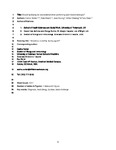Should lip dosing be reconsidered when performing open food challenges?
| dc.contributor.author | Venter, C | |
| dc.contributor.author | Maslin, Kate | |
| dc.contributor.author | Grundy, J | |
| dc.contributor.author | Glasbey, G | |
| dc.contributor.author | Dean, T | |
| dc.date.accessioned | 2018-05-10T09:55:44Z | |
| dc.date.issued | 2017-11 | |
| dc.identifier.issn | 0905-6157 | |
| dc.identifier.issn | 1399-3038 | |
| dc.identifier.uri | http://hdl.handle.net/10026.1/11480 | |
| dc.description.abstract |
To the Editor, A lip dose or labial food challenge (LFC) is a simple, easy to perform method of diagnosis that could potentially be a convenient alternative to conducting an oral food challenge in children (1). Rance and Dutau (1) published a paper on LFC in 1997 demonstrating their clinical utility, according to the technique described by Moneret-Vautrin et al. (2). This involved a drop of the allergen being placed on the lower lip and left for 10 seconds to two minutes, with the mouth slightly opened. However, in the study by Rance et al. (1), children with positive LFC did not continue to have an oral food challenge (OFC). A subsequent study by Cantani et al.(3) concluded that the LFC should not replace the OFC, but be used at the first step in a food challenge, particularly where there is a risk of anaphylaxis (4). LFCs are not currently included in international food challenge guidelines (5) (7). Here we present data from lip dose reactions in the Food Allergy and Intolerance (FAIR) study from the Isle of Wight in the United Kingdom (UK), with the aim of demonstrating the predictive value of LFCs for diagnosis of food allergy, compared to OFCs | |
| dc.format.extent | 707-711 | |
| dc.format.medium | Print-Electronic | |
| dc.language | en | |
| dc.language.iso | eng | |
| dc.publisher | Wiley | |
| dc.subject | Adolescent | |
| dc.subject | Allergens | |
| dc.subject | Child | |
| dc.subject | Female | |
| dc.subject | Follow-Up Studies | |
| dc.subject | Food Hypersensitivity | |
| dc.subject | Humans | |
| dc.subject | Lip | |
| dc.subject | Male | |
| dc.subject | Predictive Value of Tests | |
| dc.subject | Skin Tests | |
| dc.title | Should lip dosing be reconsidered when performing open food challenges? | |
| dc.type | journal-article | |
| dc.type | Letter | |
| dc.type | Observational Study | |
| dc.type | Research Support, Non-U.S. Gov't | |
| plymouth.author-url | https://www.webofscience.com/api/gateway?GWVersion=2&SrcApp=PARTNER_APP&SrcAuth=LinksAMR&KeyUT=WOS:000418437400016&DestLinkType=FullRecord&DestApp=ALL_WOS&UsrCustomerID=11bb513d99f797142bcfeffcc58ea008 | |
| plymouth.issue | 7 | |
| plymouth.volume | 28 | |
| plymouth.publication-status | Published | |
| plymouth.journal | Pediatric Allergy and Immunology | |
| dc.identifier.doi | 10.1111/pai.12765 | |
| plymouth.organisational-group | /Plymouth | |
| plymouth.organisational-group | /Plymouth/Faculty of Health | |
| plymouth.organisational-group | /Plymouth/Faculty of Health/School of Nursing and Midwifery | |
| plymouth.organisational-group | /Plymouth/REF 2021 Researchers by UoA | |
| plymouth.organisational-group | /Plymouth/REF 2021 Researchers by UoA/UoA03 Allied Health Professions, Dentistry, Nursing and Pharmacy | |
| plymouth.organisational-group | /Plymouth/Research Groups | |
| plymouth.organisational-group | /Plymouth/Research Groups/Plymouth Institute of Health and Care Research (PIHR) | |
| plymouth.organisational-group | /Plymouth/Users by role | |
| plymouth.organisational-group | /Plymouth/Users by role/Academics | |
| dc.publisher.place | England | |
| dcterms.dateAccepted | 2017-01-01 | |
| dc.rights.embargodate | 2023-10-11 | |
| dc.identifier.eissn | 1399-3038 | |
| dc.rights.embargoperiod | 12 months | |
| rioxxterms.versionofrecord | 10.1111/pai.12765 | |
| rioxxterms.licenseref.uri | http://www.rioxx.net/licenses/under-embargo-all-rights-reserved | |
| rioxxterms.type | Journal Article/Review |


